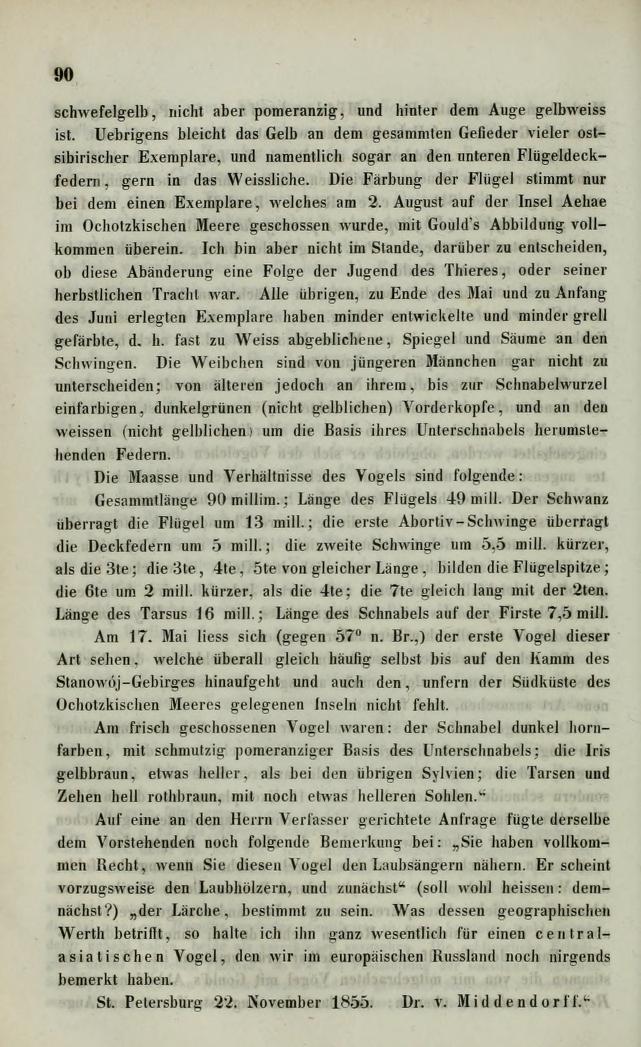


confined to dense patches of Juncus roemerianus ...and thus the name juncicola makes good sense, while junicola does not.
Trochilus Jamersoni [sic. err. typ.] Bourcier ...and this is followed by most authors.
Tr[ochilus] jamersoni M.J. Bourcier 1851 Rev. et mag. de Zoolog., Feb., 1851, p. 97So this "jamersoni" spelling (with the "r") evidently is not unique to the Compte Rendu, a fact which would appear to decrease the probability that it is simply a typographic error by the printer.
From external sources of information, it is now apparent that Bourcier's jamersoni CRASP 32:187 can be linked to one William Jameson, Professor at the University of Quito. Gould (1861), pl.95, in listing Heliodoxa jamesoni, or Jameson's Brilliant, writes "In the naming of this bird after Professor Jameson of Quito, M. Bourcier has my entire acquiescence... Happily for science, Professor Jameson has long been located at Quito..."[APP: "entire acquiescence" -- an interesting phrase.]
Recognition of subspecies through much of the east "extend[s] the trinomial system to the limits of utility" (Mengel 1965: 511). Shortly after its description, Ridgway (1901: 358) synonymized M.m.juddi with M.m.melodia, remarking that specimens from Atlantic Coast and Great Plains "average slightly grayer than those from the intermediate region, but the difference is so slight and inconstant that subspecific separation seems to me unjustifiable." Bull (1974: 600) considered neither M.m.euphonia nor M.m.juddi valid, noting the "poorly differentiated" M.m.euphonia "is merely part of an east-west cline extending from New England and New York . . . through several slightly differentiated populations including the more western . . . juddi (itself part of the cline)."
"The citation should be: Strix hirsuta japonica Temminck & Schlegel, 1845, in Siebold, Fauna Japonica, Aves, p.28, pl.9B. Note: Page 28 appeared in fascicle 2 in July 1845; plate 9B appeared no earlier than 1849 (Holthuis & Sakai, 1970)."The footnote in H&M 3rd:234 reads:
12This name must date from 1845 see Holthuis & Sakai (1970).Holthuis LB, Sakai T. 1970. "Ph. F. Von Siebold and Fauna Japonica. A History of Early Japanese Zoology." Academic Press of Japan. Tokyo, Japan.
fasc. 1, pp. 1-24. pls. 1,2,5,6,8,9,11,12,13, 17 1844 (14 July 1845) fasc. 2, pp. 25-44. pls. 21,22,25,28,32,35,40,41, 52, suppl. B 14 July 1845 ...[The date in parentheses apparently is a date given by the "Rijksarchief", apparently the date when the material was "sent out to Dutch libraries by the Dutch Government" and are presumed to be later than the "actual date of publication."]
Holthuis also states (p.74)
The contents of the fascicles in many cases is incompletely known. As far as the text is concerned I have not been able to add anything to Esaki's list. But in checking the parts of the Archiv für Naturgeschichte containing information on the bird volume of the Fauna Japonica (see Sherborn & Jentink, 1895. Proc. zool. Soc. London. p.149), it proved possible to ascertain of many plates in which fascicle or groups of fascicles they were published.
Wiegmann [= the Archives für Naturgeschichte] says Pernis apivorus closed this part, but G.R. Gray, Genera, i. p.38, Sept. 1845, quotes p.25 and therefore includes signature G in part 1.
Cisticola juncidis Concept
10. Sp. SYLVIA Juncidis -- Penne fosche marginate di fulvastre al disopra, gola, spalle, fianchi e coscie solle penne fosche alla base, nere all'estremita e term- nate di fulvo, le due piu esteriori lo sono di bianco; uno spazio nudo fra l'occhio e l'orecchi, rostro fosco, piedi bianchicci. Oss. Mo visto questa piccola Capinera vicino all Rocella saltellare sopra i giuchi nei luo- ghi umidi; l'avero pure osservata nelle vicanze di Liverno, insieme colla seguente.
